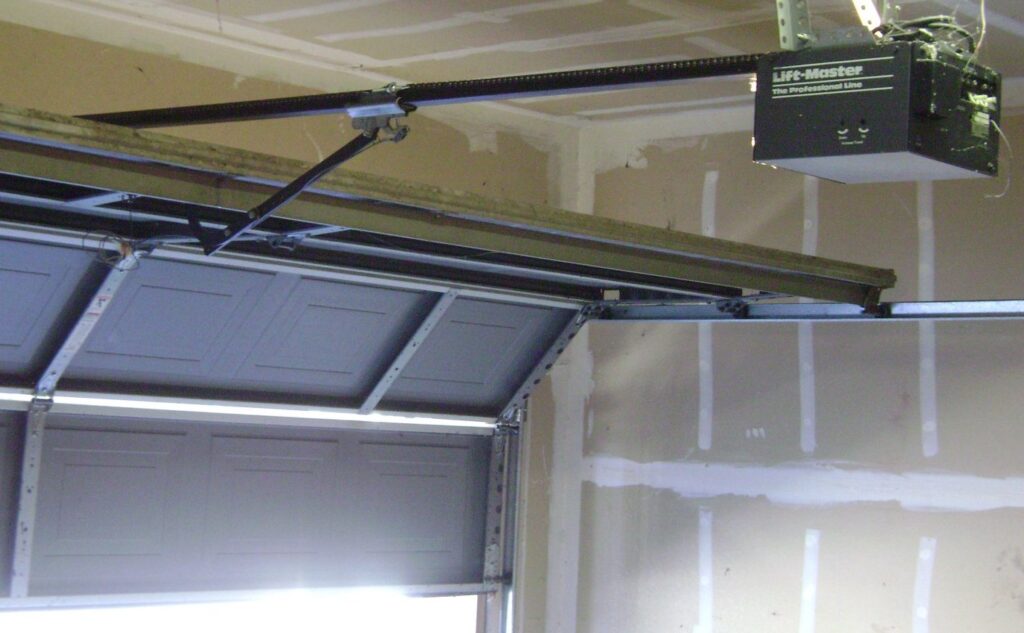
Garage Door Motor Replacement: A guide to Consider 2024
Replacing a garage door motor can be daunting, but it becomes manageable with the proper knowledge and tools. This guide will walk you through the garage door motor replacement process, helping you understand when and why you should replace your motor, the types of motors available, and the step-by-step installation process. Garage door motor replacement is a crucial task that can significantly enhance the functionality and efficiency of your garage door system.
Why Replace Your Garage Door Motor?

Common Reasons for Replacement
- Wear and Tear: The motor components can wear out over time, leading to decreased efficiency or complete failure. This is especially common in older models used extensively over many years.
- Noise: Older motors can become noisy, causing disturbances, especially if your garage is attached to your home. A loud motor can disrupt the peace and quiet of your home, making it an inconvenience.
- Upgraded Features: Newer models offer advanced features like smartphone connectivity, battery backup, and enhanced security. These features can add convenience, safety, and energy efficiency to your home.
- Energy Efficiency: Modern motors are more energy-efficient, reducing your electricity bill. Newer models often consume less power, helping you save money in the long run.
Signs Your Motor Needs Replacement
- Frequent Breakdowns: If your motor frequently malfunctions or stops working, it may be time for a replacement. Constant repairs can become costly and indicate that the motor is nearing the end of its life.
- Slow Operation: The motor might lose power if your garage door opens and closes slower than usual. This can indicate that the motor is struggling to perform its function and could fail soon.
- Excessive Noise: Grinding or squeaking sounds indicate the motor is struggling. These noises can be due to worn-out parts or improper lubrication.
- Vibration: Excessive vibration or shaking during operation can indicate motor issues. It can suggest that the motor is not correctly aligned or that there are internal issues with the motor.
Types of Garage Door Motors
1. Chain Drive Motors
Pros:
- Durable and Reliable: Chain drive motors are known for their strength and longevity, making them a popular choice for heavy garage doors.
- Cost-Effective: These motors are generally less expensive compared to other types.
Cons:
- Noisy: The chain mechanism can be pretty loud, especially during operation.
- Requires More Maintenance: The chain needs regular lubrication and tension adjustments to maintain smooth operation.
2. Belt Drive Motors
Pros:
- Quieter Operation: Belt drive motors are much quieter than chain drive motors, making them ideal for attached garages.
- Less Maintenance: Belts do not require as much maintenance as chains and tend to last longer without adjustments.
Cons:
- Higher Cost: These motors are generally more expensive than chain drive models.
- Not as Durable as Chain Drive: While quieter, the belts can wear out faster than chains under heavy use.
3. Screw Drive Motors
Pros:
- Fast Operation: Screw drive motors open and close garage doors faster than other types.
- Suitable for Wider Doors: They are ideal for large, heavy doors due to their robust design.
Cons:
- Affected by Temperature Changes: Extreme temperatures can affect the performance of screw drive motors.
- Requires Regular Maintenance: Regular lubrication of the screw mechanism is necessary to prevent wear and tear.
4. Direct Drive Motors
Pros:
- Quietest Option: Direct drive motors are virtually silent, making them perfect for homes where noise is a concern.
- Minimal Maintenance: With fewer moving parts, these motors require less maintenance.
Cons:
- Higher Cost: They tend to be more expensive than other motor types.
- Limited Availability: Not as widely available as chain or belt drive motors, limiting options for buyers.
Tools and Materials Needed
- New Garage Door Motor: Ensure the motor is compatible with your garage door system.
- Screwdriver Set: Both flathead and Phillips screwdrivers will be needed for various screws.
- Wrench Set: Wrenches will be required to tighten bolts and nuts.
- Ladder: A sturdy ladder to reach the motor and other components safely.
- Drill with Bits: To create holes for mounting brackets and other hardware.
- Measuring Tape: To ensure accurate placement and alignment of the motor.
- Safety Glasses: To protect your eyes from debris during installation.
- Level: To ensure the motor and tracks are correctly aligned.
- Stepladder: Useful for reaching higher areas and providing stability.
- Mounting Brackets: If not included with the motor, you will need appropriate brackets to secure the motor.
Step-by-Step Guide to Replacing Your Garage Door Motor
1. Preparation
- Safety First: Disconnect the power to the garage door opener to prevent accidents. This can usually be done by unplugging the unit or turning off the circuit breaker.
- Read the Manual: Familiarize yourself with the new motor’s manual and installation instructions. Understanding your model’s specific requirements and steps will make the process smoother.
- Clear the Area: Ensure the garage area is clear of obstacles to allow easy access to the motor. This includes moving vehicles, tools, and other items that could hinder your work.
2. Remove the Old Motor
- Disconnect the Power: Unplug the motor from the power source to ensure safety.
- Remove the Motor Cover: Use a screwdriver to remove the screws holding the cover in place. This will expose the internal components of the motor.
- Disconnect the Wires: Carefully disconnect the wires from the motor, noting their positions for reconnection. Take a photo or label the wires to ensure proper reconnection.
- Detach the Motor: Unscrew the motor from its mounting brackets and remove it from the garage door assembly. You may need assistance to hold the motor steady while you unscrew it.
3. Install the New Motor
- Mounting the New Motor: Attach the new motor to the mounting brackets, ensuring it is securely fastened. Follow the manufacturer’s instructions for proper placement and alignment.
- Connect the Wires: Reconnect the wires to the new motor, matching the earlier positions. Ensure all connections are tight and secure.
- Attach the Motor Cover: Replace the motor cover and secure it with screws. This protects the internal components from dust and debris.
- Align the Motor: Use a level to ensure the motor is correctly aligned with the garage door track. Proper alignment is crucial for smooth operation.
4. Test the New Motor
- Reconnect the Power: Plug the motor back into the power source.
- Test the Operation: To ensure smooth operation, open and close the garage door several times. Listen for any unusual noises and observe the door’s movement.
- Adjust Settings: If necessary, adjust the motor’s settings for optimal performance. This may include adjusting the force and travel limits.
5. Final Adjustments
- Check the Safety Features: Test the safety sensors and auto-reverse mechanism to ensure they function correctly. Place an object in the door’s path to ensure the door reverses upon contact.
- Lubricate Moving Parts: To ensure smooth operation, apply lubricant to the garage door’s moving parts, including the rollers, hinges, and tracks.
- Tighten All Screws: Ensure all screws and bolts are tightened securely to prevent any future issues. Loose hardware can lead to malfunctions and safety hazards.
Maintenance Tips for Your New Garage Door Motor
- Regular Inspection: Periodically inspect the motor and other components for signs of wear and tear. Address any issues promptly to prevent further damage.
- Lubrication: Keep all moving parts well-lubricated to reduce friction and wear. For best results, use a high-quality garage door lubricant.
- Clean the Motor: Clean the motor and surrounding area to prevent dust and debris buildup. This helps maintain efficient operation.
- Check the Balance: Ensure the garage door is properly balanced to prevent strain on the motor. An unbalanced door can cause the motor to work harder and wear out faster.
Conclusion
Garage door motor replacement can extend the life of your garage door system, improve its efficiency, and provide you with modern conveniences. Following this comprehensive guide, you can confidently tackle the replacement process and enjoy a smooth, reliable garage door operation for years. Always prioritize safety and consult a professional if you encounter issues beyond your expertise.
Incorporating these steps and tips into your garage door motor replacement project will ensure a successful and long-lasting upgrade to your home’s garage system.



